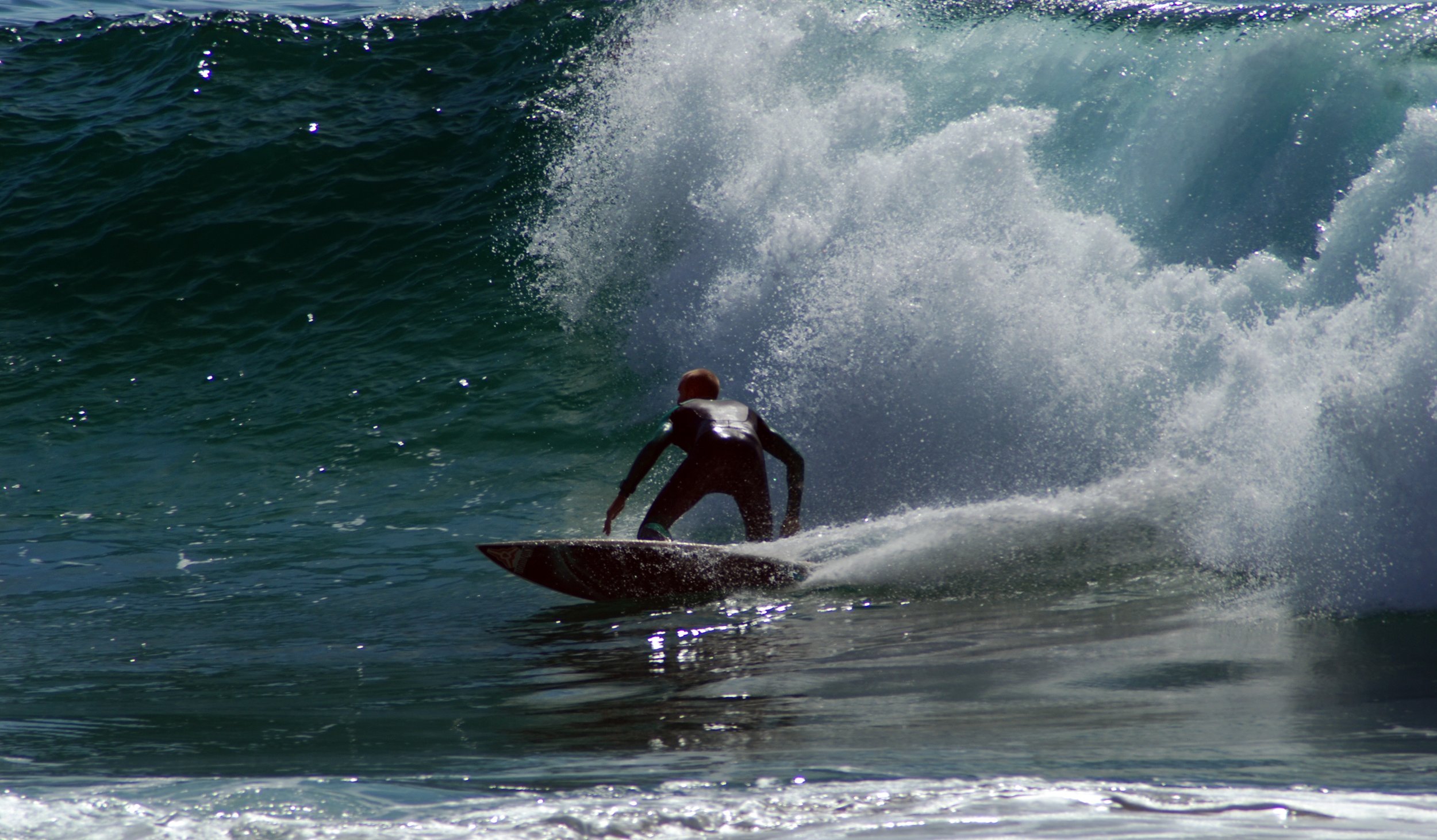Bottom talk: do you want a vee or a concave or both?
Published in Wavelength issue 219
It has to be said, I do like a good bottom. It must flow, have good curves and compliment the rest of the features - surfboard features that is. And as with all features of a board there is a yin and a yang. A vee bottom is the total opposite to the concave. Let me explain…
Vee bottom - this is when the centre of the board is higher than the rail line, usually with a flat surface running from the rail to the peak of the vee. This peak acts as a crucial pivot point to allow the board to tip from rail to rail. Due to the extra surface area created by the peak at the stringer it dispels water to the rails. This cuts through the water, shedding water to the rails of the board. This basically creates directional control, but due to drag, this in turn detriments speed. Vee is generally found in the latter half of the board, with modern shortboards running with a vee right on the end of the tail. This will help roll the board rail to rail off the back foot. However, a variant of this is forward vee, which sits at the mid point or further forward of the mid point of the board. This helps cut through any chop the board may encounter, so is useful for boards running at high speeds, like step-up boards and guns. A belly bottom or rolled vee is a smoothed out variant of the forward vee, and is a rounder transition to the centre of the board, usually found in 60’s style longboards, some retro boards and the mini Simmons style boards which are making a comeback too. Again this creates control at high speeds, so is usually found on boards that already have momentum or glide.
The yang to the vee is the concave, which is a slightly more complex beast. This is best described as a lower centre line at the stringer compared to the rail line, and is typically a smooth transition. If you think about it, this too increases the surface area, but it collects water rather than shedding it. This creates lift, which therefore creates speed, but causes the board to suck to the surface of the water. So this means that the concave bottom increases speed, but makes the board stiffer and less maneuverable. However, there is a way of tackling this. For example the Lost Rocket had huge amounts of concave, but had a vast amount of tail rocker to counteract the stiffness from the concave. This hopefully highlights where the previous characteristics used by shapers can be combined to create the overall desired effect from the board.
The other method is to bring in what they call spiral vee or something more subtle such as a double concave. A double concave has a concave on either side of the stringer line, leaving the string area level with the rails. A spiral vee is a double concave, but the stringer line is higher than the rail line. This creates the pivot point we discussed, but also creates lift. A blend of something is never as strong as the pure version, so a double concave or spiral vee will never have the maximum effect of a vee or a concave.
Yet another variant is the channeled bottom. Linear channels cut out between the fins give extra hold in the water and also create a defined water-flow out through the tail. Channels were big in 80’s and 90’s for super fast and hollow waves. They are making a small comeback in a few boards such as the Peter Daniels Fang and many of Tomo’s strange but effective hydrohull boards. A smoothed out channeled board which sits between then double concave and channel bottom is a Bonzer bottom. These are ridiculously fast two or four concave channeled bottoms. However they rely heavily on four specialised canard fins to add an extra dimension to water-flow. This becomes super complex and deserves its own section, which is why next month I’ll talk about fins.










Why do tail shapes affect the performance of your surfboard? What tail shape is going to best suit the conditions you're about to surf in? All these questions answered within, click to read more